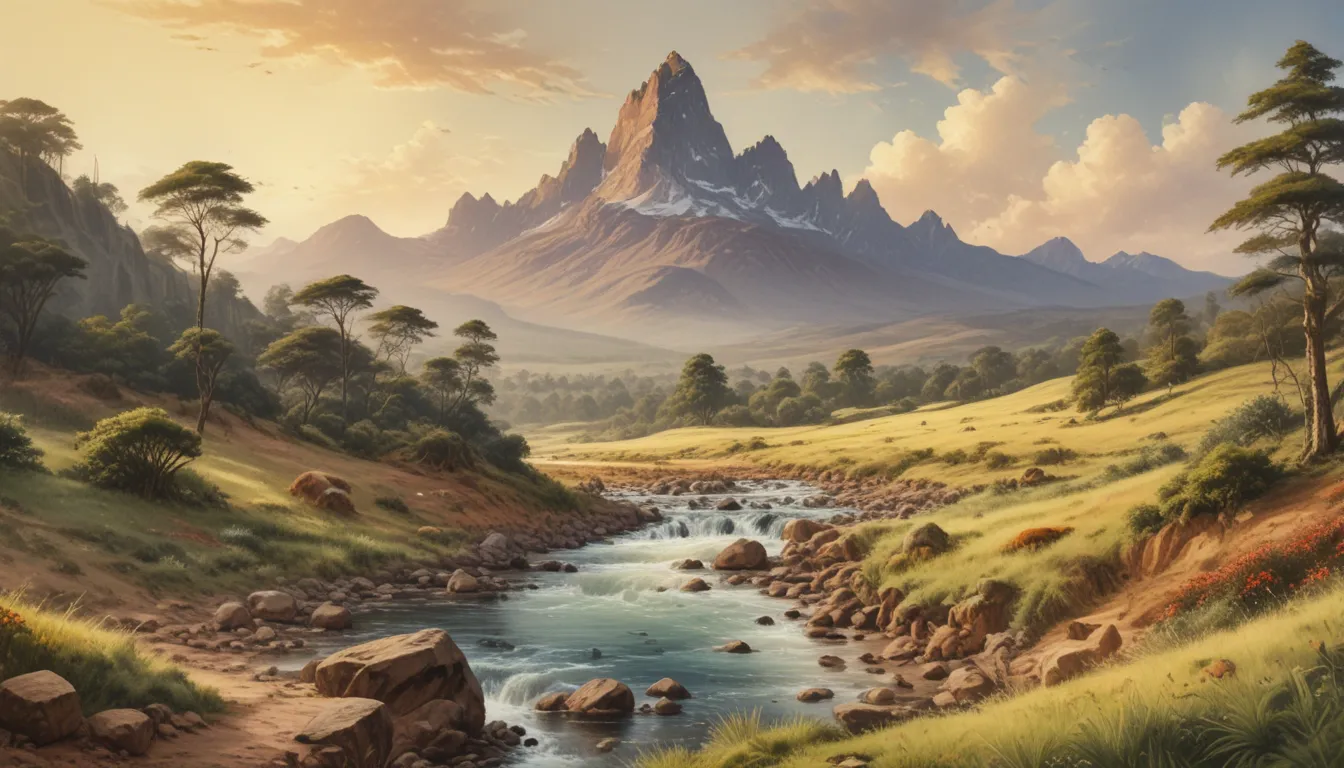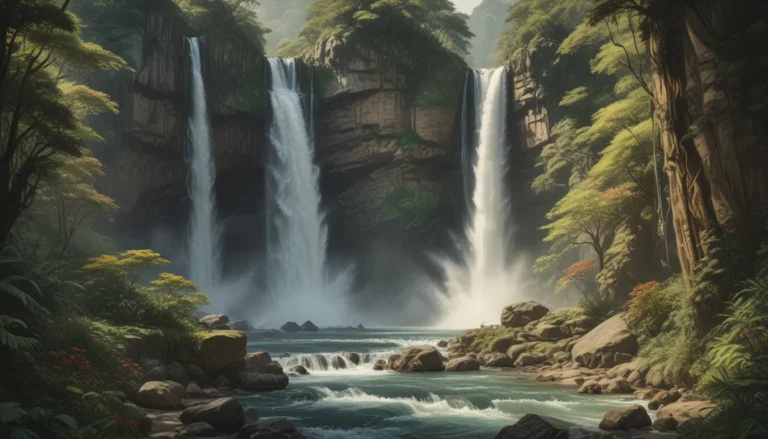The images in our articles are for illustrative purposes only and may not exactly match the content. They are intended to capture your interest and complement the text, not to replace it.
Mount Kenya, Africa’s second-highest peak, is a majestic gem nestled in Kenya’s heart, beckoning adventurers and nature enthusiasts with its allure. This towering mountain boasts a rich history, diverse flora and fauna, and stunning landscapes that make it a must-visit destination for those seeking a unique and unforgettable experience. In this article, we will unravel 16 captivating facts about Mount Kenya, shedding light on the secrets and wonders that make this mountain so special.
Africa’s Second Highest Peak
Rising to an impressive altitude of 5,199 meters (17,057 feet), Mount Kenya stands as Africa’s second-highest peak, just after Mount Kilimanjaro. Its towering presence attracts mountaineers and hikers from around the world, eager to conquer its challenging slopes and bask in its natural beauty.
UNESCO World Heritage Site
In 1997, Mount Kenya was honored with the title of a UNESCO World Heritage Site, recognizing its exceptional value and significance. The mountain’s diverse ecosystems, including its afro-alpine vegetation and rare species, make it a treasure trove for biodiversity enthusiasts and conservationists.
Glacial Beauty
While climate change has taken its toll on Mount Kenya’s glaciers, the mountain is still home to impressive icy formations. Lewis Glacier and Tyndall Glacier stand as a testament to the mountain’s icy allure, offering a glimpse into a vanishing world.
Biodiversity Wonderland
Mount Kenya’s biodiversity is a sight to behold, with a diverse array of wildlife calling its slopes home. From majestic elephants and buffalos to playful monkeys and over 130 bird species, the mountain teems with life, making it a paradise for nature lovers.
Cultural Significance
For the Kikuyu people of Kenya, Mount Kenya holds profound spiritual and cultural significance. They revere the mountain as the realm of Ngai (God) and conduct rituals and ceremonies on its slopes, honoring their ancestral connections to this sacred land.
Peaks of Wonder
Mount Kenya is not just a single peak; it is a stratovolcano with three distinct summits – Batian, Nelion, and Lenana. Batian, standing at 5,199 meters (17,057 feet), reigns as the highest peak, offering a challenge and a reward for intrepid climbers.
Majestic National Park
Surrounded by the breathtaking vistas of the Mount Kenya National Park, this protected area spans approximately 715 square kilometers (276 square miles) of pristine wilderness. Visitors can immerse themselves in the park’s beauty and encounter a wealth of wildlife and landscapes.
Climbing Adventures
Mount Kenya beckons climbers with a range of challenging routes, catering to both seasoned mountaineers and beginners. The Sirimon-Naro Moru route is a popular choice, known for its scenic splendor and diverse terrain that promises a memorable ascent.
Snowy Delights
Despite its equatorial location, Mount Kenya experiences snowfall due to its lofty heights. The snow-capped peaks create a picturesque scene, earning the mountain the poetic nickname of “The Mountain of Light” and captivating all who gaze upon its beauty.
Cavernous Wonders
Exploring Mount Kenya’s caves reveals a hidden world of wonders, with the Temple cave standing out as a massive marvel waiting to be discovered. Nestled at an altitude of 4,300 meters (14,100 feet), this cavernous beauty entices adventurers to explore its depths.
Wildlife Encounters
Hikers on the Sirimon Route are treated to wildlife sightings, with forest-dwelling elephants, buffalo, colobus monkeys, and an array of bird species adding to the adventure. The diverse fauna of Mount Kenya offers a glimpse into Kenya’s natural heritage.
Scenic Marvels
From the dramatic gorges of Gorges Valley to the tranquil beauty of Lake Ellis, Mount Kenya’s slopes are adorned with natural wonders waiting to be explored. These picturesque landscapes offer hikers a peaceful retreat and a chance to connect with nature.
Rock Climbing Paradise
Rock climbing enthusiasts find their haven in Mount Kenya’s rock faces, with Point Lenana offering a playground of climbing routes for all skill levels. The rugged beauty of the mountain provides a thrilling backdrop for rock climbers seeking a challenge.
Glacial Charms
Melting glaciers on Mount Kenya have given rise to several glacial lakes, each more picturesque than the last. Lake Michaelson, Lake Ellis, and Lake Rutundu are among the stunning gems adorning the mountain’s slopes, inviting visitors to marvel at their beauty.
Literary Inspirations
Mount Kenya’s timeless beauty has inspired countless writers and adventurers, with Ernest Hemingway immortalizing the mountain in his iconic work, “The Snows of Kilimanjaro.” The mountain’s allure and grandeur continue to captivate storytellers and readers alike.
Volcanic Legacy
As an extinct volcano that last erupted some 2.6 million years ago, Mount Kenya’s volcanic origins have shaped its landscape and geology, leaving a lasting imprint on the surrounding terrain. The mountain’s unique formation adds to its mystique and charm, drawing inquisitive minds to unravel its secrets.
In conclusion, Mount Kenya stands as a testament to nature’s grandeur and cultural heritage, offering a rich tapestry of experiences for visitors to explore. Whether scaling its peaks, delving into its caves, or marveling at its wildlife, Mount Kenya promises an unforgettable journey of discovery and wonder. Embark on a voyage to Mount Kenya today and let its beauty and majesty leave an indelible mark on your soul.
Frequently Asked Questions
-
How tall is Mount Kenya?
Mount Kenya stands proudly at an impressive height of 5,199 meters (17,057 feet), making it the highest mountain in Kenya and the second-highest in Africa. -
Can I climb Mount Kenya?
Certainly! Mount Kenya offers a range of climbing routes suitable for various skill levels. However, it is advisable to have prior mountaineering experience and be in good physical condition before attempting the climb. -
Is Mount Kenya a National Park?
Yes, Mount Kenya is a designated National Park since 1949, safeguarding its natural beauty and wildlife. In 1997, it was further recognized as a UNESCO World Heritage Site for its outstanding universal value. -
What wildlife can be found on Mount Kenya?
Mount Kenya is home to a diverse array of wildlife, including elephants, buffalos, leopards, hyenas, and numerous primate species. Birdwatchers will also delight in the region’s rich avian population. -
When is the best time to visit Mount Kenya?
You can visit Mount Kenya year-round, but the dry months of January to March and July to October are considered ideal for climbing. Be sure to check weather conditions and plan your trip accordingly for a safe and enjoyable experience.
Immerse yourself in the captivating allure of Mount Kenya and embrace the wonders that await in this timeless natural treasure. Discover the magic of Kenya’s landscapes and wildlife, and let your spirit soar to new heights amidst the splendor of Mount Kenya.






